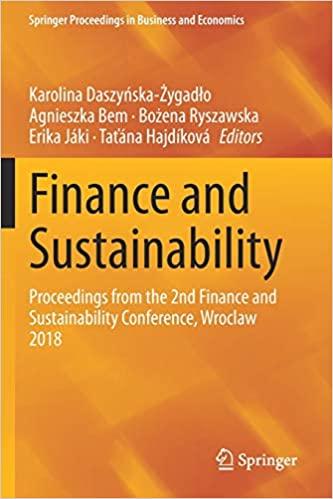Question
Futures Hedging. It is a little known fact, but probably obvious when you think about it, that Santa Claus is Canadian. When we learn about
Futures Hedging. It is a little known fact, but probably obvious when you think about it, that Santa Claus is Canadian. When we learn about Santa Claus as children, we are led to believe that he simply distributes gifts all around the world at will, without concern for the financial implications of his gift-giving decisions. However, the business of Christmas gift distribution has become a risk management nightmare, given the myriad of items that he has to make and distribute every year. Suppose it is June 1, and S. Claus, Inc. expects to deliver 1.0 million hockey sticks (made from aluminum) to kids throughout the world on December 25. He would like to limit his exposure to fluctuations in the price of aluminum by hedging his input price risk on the Chicago Mercantile Exchange (CME) using their physical aluminum contract. Help Santa lock in an aluminum price by answering the following questions based on the data in table 2 (all prices in $ / metric ton (MT)):
Table 2. Long Hedge by S. Claus, Inc.
| Date | Cash Market | Futures Market |
| Price Data as of June 1 | Cash Market = $2,000 | December Futures = $2,200 |
| Transactions: | ||
| June 1 | ||
| December 25 | ||
| Net Cost per MT = |
1. What is the current basis? Explain 3 factors that may influence changes in the basis for aluminum, given that the delivery point is Chicago and Santa Claus lives at the North Pole.
2. Suppose Santa wants to lock in the June 1 price of $2,000 by using a long futures hedge. Describe the transactions, in both the cash and futures markets, that will be required to complete this hedge. Assume the cash price on December 25 is $1,800 and the December futures price is $1,900. Calculate the net cost, after hedging, on a per metric ton basis. Comment on whether this hedge was successful or not.
3. In your answer to (b), did the basis widen or narrow? Did Santa benefit or lose from this change in basis? What is your general conclusion regarding how changes in the basis affect the effectiveness of hedging for long hedgers?
4. Assume instead that the basis is positive, that is, the cash price on June 1 at the North Pole is $2,400 when the December futures is $2,200. If the cash price again falls by $200 and the futures by $300, explain how your conclusion in c does or does not change.
Step by Step Solution
There are 3 Steps involved in it
Step: 1

Get Instant Access to Expert-Tailored Solutions
See step-by-step solutions with expert insights and AI powered tools for academic success
Step: 2

Step: 3

Ace Your Homework with AI
Get the answers you need in no time with our AI-driven, step-by-step assistance
Get Started


